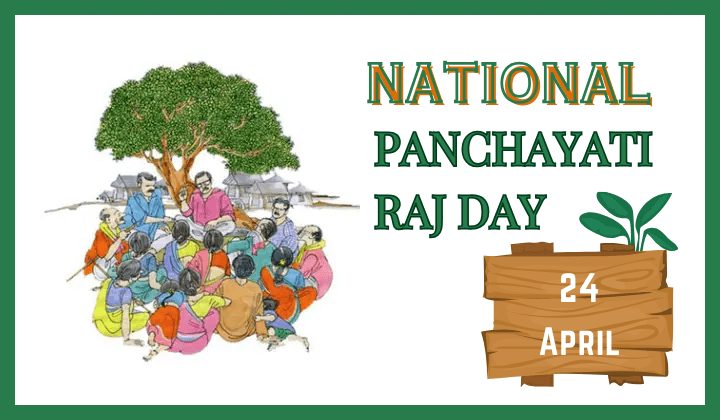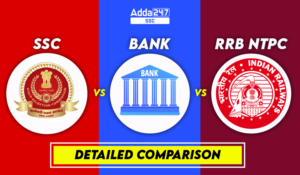National Panchayati Raj Day 2024
The Ministry of Panchayati Raj organizes the National Panchayati Raj Day on 24th April every year to honour the establishment of the Panchayati Raj Institutions (PRIs) or Local Self Government across India. The day marks the approval of the 73rd Amendment Bill, 1992 which came into force on April 24, 1993.
The Panchayati Raj system across the country consists of village, intermediate and district-level panchayats. This is a unique system of local governance in the world. To mark this significant achievement, the first National Panchayati Raj Day was observed nationwide on 24th April 2010 by the then Prime Minister of India, Dr. Manmohan Singh.
National Panchayati Raj Day History
India is the 7th largest country and the world’s largest democracy. Due to its high population and large area, complete democracy at the grassroots level is not an easy feat under a centralized government. Due to this reason, it was decided that the powers of the government must be decentralized to local levels.
To fulfil this requirement, a committee was constituted in 1957 under the chairmanship of Balwantrai Mehta. The committee recommended the decentralization of powers. Hence, the concept of Panchayati Raj was first devised in India.
Significance of Rashtriya Panchayati Raj Diwas
The biggest aspect of National Panchayati Raj Day is that the political power is in the hands of the common people. Now, almost every village, block, and district has a separate leader who runs the administration of that particular territory. To supervise the Panchayati Raj System in India, a separate Ministry of Panchayati Raj was constituted on 27th May 2004.
Through the three-tier system of local self-government, the Government of India focuses on effectively implementing various rural activities that will benefit its rural population. The three tiers of the Panchayat system in India are Village Panchayat or Gram Panchayat, Block panchayat, or the Mandal Samithi, and Zilla Parishad, or the District Panchayat.
The Central government also felicitates 170 Panchayati Raj institutions on National Panchayati Raj Day each year. It awards the three-tier panchayats with the ‘Panchayat Sashaktikaran Puraskar’ for their exemplary work under the Panchayat Empowerment Accountability Incentive Scheme. The best performers will be felicitated with the ‘Nanaji Deshmukh Rashtriya Gaurav Gram Sabha Puraskar’.
National Panchayati Raj Day: Important Facts
“Local Government” is mentioned in the State List under the 7th Schedule of the Constitution.
Article 40 of the Indian Constitution states: “The state shall take steps to organize Village Panchayats and endow them with such powers and authority as may be necessary to enable them to function as units of self-government.”
Various committees on Panchayati Raj:
- Balwant Rai Mehta: established 1957
- V.T.Krishnamachari : 1960
- Santhanam Committee: 1963
- Takhatmal Jain Study Group: 1966
- Ashok Mehta Committee: 1977
- G.V.K. Rao Committee: 1985
- Dr. L.M. Singhvi Committee: 1986
- P. K. Thoongan committee: 1988
The Panchayati Raj is divided into a three-tier structure, namely:
- Gram Panchayat (village level)
- Mandal Parishad or Block Samiti or Panchayat Samiti (block level)
- Zila Parishad (district level).
Rajasthan in 1959 became the first state in India to launch the Panchayati Raj.
(The institution of Panchayati Raj was inaugurated by Jawahar lal Nehru on October 2, 1959, in Nagaur District of Rajasthan.)
Andhra Pradesh became the second state to launch Panchayati Raj at Shadnagar near Hyderabad.
The 73rd Amendment, 1992
Important features of this historical amendment are given below:
- By inserting ‘Part-IX: The Panchayat’s in the Constitution of India, the Panchayat Raj Institutions in India have become Constitutional bodies.
- Establishment of Panchayats in every state has become mandatory under Article 243-B.
- Provisions of mandatory devolution of powers, authority, and responsibilities by the State Government to the Panchayats have been made in Article 243-G.
- The tenures of the village Panchayats have been fixed to five years under Article 243-E.
- Mechanism of the State Election Commission has been provided to conduct an Independent Election under Article 243-K.
- Provision for giving due representation to SC/ST or Women in the Village Panchayats has been made under Article 243-D.
- Provision to review the financial position of the Panchayats once in 5 years through the State Finance Commission has been made under Article 243-I.




 SSC CHSL Vs. SSC CGL – What Changes in S...
SSC CHSL Vs. SSC CGL – What Changes in S...
 RRB ALP Preparation Strategy 2025, Tips ...
RRB ALP Preparation Strategy 2025, Tips ...
 SSC vs Bank Vs RRB NTPC Exams, Check Det...
SSC vs Bank Vs RRB NTPC Exams, Check Det...


